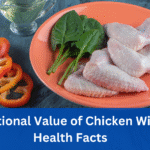In a world dominated by supermarkets, fast food, and instant meals, the idea of growing and hunting for your own food may seem outdated—or even extreme. However, there is a growing movement of people returning to the land for nourishment, sustainability, and self-reliance. Whether motivated by health, environmental concerns, or a desire to reconnect with nature, many are asking: How to Grow and Hunt for Your Own Food?
This guide covers the fundamentals of becoming more self-sufficient—learning to grow your own vegetables and fruits, raising animals, and hunting or foraging for wild food. It’s about more than survival; it’s about thriving with intention, respect for the environment, and a deeper connection to what we eat.
Part I: Growing Your Own Food
1. Understanding Your Environment
Before planting anything, it’s vital to understand your local climate, soil type, and growing zone. Your region’s growing season will determine what and when you can plant. Resources like the USDA Plant Hardiness Zone Map (for North America) or similar regional tools can guide you in selecting suitable crops.
Soil testing is a crucial step. It tells you the pH level, nutrient content, and what amendments (like compost or lime) are needed for healthy plant growth.
2. Starting a Garden
a. Choose a Site
Pick a spot with at least 6–8 hours of sunlight per day, access to water, and good drainage. If you have limited room or poor soil, raised beds or container gardening are good choices.
b. Essential Tools and Materials
-
Shovel, hoe, rake
-
Watering can or hose
-
Compost bin
-
Seeds or starter plants
-
Mulch for moisture retention
c. Selecting Crops
Start with easy-to-grow, high-yield crops:
-
Leafy greens: spinach, kale, lettuce
-
Root vegetables: carrots, radishes, beets
-
Fruiting plants: tomatoes, peppers, cucumbers
-
Herbs: basil, mint, thyme, rosemary
Consider succession planting—planting new crops every few weeks—to ensure a continuous harvest.
3. Composting and Soil Health
Healthy soil equals healthy food. Composting creates nutrient-rich soil from garden trash, leaves, and kitchen scraps.
What to compost:
-
Fruit and veggie scraps
-
Coffee grounds
-
Eggshells
-
Grass clippings
-
Dried leaves
Avoid meat, dairy, and oily food scraps, which attract pests.
4. Watering and Pest Management
Water early in the day to reduce evaporation.Water-efficient solutions include soaker hoses and drip irrigation.
For pest control, try natural methods:
-
Neem oil or insecticidal soap
-
Physical barriers like netting or row covers
5. Preserving the Harvest
Excess produce can be preserved via:
-
Canning: jars sealed with heat for long-term storage
-
Drying: herbs, fruits, and meats
-
Freezing: for most vegetables and some fruits
-
Fermenting: pickles, sauerkraut, kimchi
Preserving food extends your harvest and prepares you for off-seasons.
Part II: Raising Animals for Food
If your property allows, backyard livestock can be a sustainable source of protein and dairy.
1. Chickens
-
Breed Selection: Cornish Cross for meat, Leghorns for eggs
-
Housing: Provide a secure coop to protect from predators
-
Feeding: Balanced feed, supplemented with kitchen scraps
-
Daily Care: Clean water, regular cleaning of the coop
2. Rabbits
Quiet, clean, and fast-reproducing, rabbits are an efficient source of meat.
-
Breed: New Zealand and Californian are common meat breeds
-
Housing: Wire cages or hutches
-
Feeding: Pellets, hay, greens
-
Butchering: Rabbits reach butchering age around 10–12 weeks
3. Goats
In addition to milk and meat, goats can also be used to eradicate weeds.
-
Breed: Nigerian Dwarf or Nubian for milk; Boer for meat
-
Care: Fencing, shelter, rotational grazing
-
Feeding: Hay, browse, minerals, grain in moderation
Each animal requires commitment, but the reward is self-sufficient protein production.
Part III: Hunting and Foraging for Wild Food
In addition to growing food, wild resources offer an abundant and often overlooked source of nourishment.
1. The Ethics of Hunting
Hunting is not simply sport—it’s a sustainable food practice when done ethically and legally.
-
Licensing: Always obtain the necessary hunting permits and follow local regulations.
-
Seasons and Limits: Follow hunting seasons and bag limits to protect ecosystems.
-
Respect for Animals: Use all parts of the animal when possible and ensure a quick, humane kill.
2. Basic Hunting Skills
If you’re new to hunting, consider:
-
Learning from a mentor
-
Taking a hunter safety course
-
Practicing with your weapon of choice (rifle, bow, etc.)
-
Scouting: Learn animal behavior and habitats
-
Tracking: Look for signs like scat, tracks, and feeding areas
Common game includes:
-
Deer: A single deer can provide over 50 pounds of meat
-
Wild turkey: Excellent for meat and feathers
-
Rabbit and squirrel: Abundant and easy to hunt for beginners
-
Waterfowl: Ducks and geese in season
3. Processing and Butchering
After the kill, proper field dressing and cooling the meat are essential to prevent spoilage. Learning to butcher your own meat not only saves money but ensures nothing goes to waste.
Tools you’ll need:
-
Sharp knives
-
Bone saw
-
Clean work surfaces
-
Freezer bags or vacuum sealer
Part IV: Foraging – Nature’s Grocery Store
1. Why Forage?
Foraging allows you to supplement your diet with wild plants, mushrooms, nuts, and fruits. It’s also an opportunity to learn more about your local ecosystem.
2. Basic Foraging Rules
-
Know before you go: Never eat anything unless you’re 100% sure it’s safe.
-
Use multiple sources to ID plants (books, apps, field guides).
-
Harvest sustainably: Don’t over-harvest and avoid endangered species.
-
Respect private property and protected lands.
3. Common Foraged Foods
-
Dandelion: Leaves for salads, roots for tea
-
Wild berries: Blackberries, raspberries, blueberries
-
Nuts: Acorns, walnuts, hickory nuts
-
Wild garlic and onions
-
Mushrooms: Morels, chanterelles (only with proper knowledge)
Always avoid plants with look-alikes, and if unsure, consult a local forager or expert.
Benefits of Growing and Hunting Your Own Food
1. Healthier Diet
You control what goes into your food—no pesticides, antibiotics, or additives.
2. Environmental Impact
Reduce your carbon footprint by eliminating transportation, packaging, and industrial farming emissions.
3. Self-Reliance
In times of economic uncertainty or supply chain disruptions, being able to feed yourself and your family is invaluable.
4. Connection to Nature
Spending time outdoors and engaging with natural cycles can be deeply grounding and fulfilling.
5. Financial Savings
Although initial setup costs can be high, over time, growing and harvesting your own food can lead to substantial savings.
Challenges and Considerations
1. Time Commitment
Self-sufficiency isn’t instant—it takes time to learn, plant, harvest, and care for animals.
2. Learning Curve
Mistakes will happen—plants may die, animals may escape, crops may fail. Treat every error as a lesson.
3. Legal Restrictions
Urban and suburban areas may have restrictions on livestock, hunting, or even gardening. Check local ordinances.
4. Seasonal Limitations
You can’t grow or hunt everything year-round. Learn to preserve, store, and plan accordingly.
Getting Started: Step-by-Step Plan
-
Start Small: Grow a few herbs in pots or plant a small garden bed.
-
Take a Class: Community centers often offer gardening, canning, or foraging workshops.
-
Join a Local Group: Gardening clubs, hunting associations, and permaculture communities are valuable resources.
-
Read and Research: Books like The Self-Sufficient Life by John Seymour or Braiding Sweetgrass by Robin Wall Kimmerer offer inspiration and practical guidance.
-
Keep a Journal: Track planting dates, weather patterns, animal behavior, and harvest yields.
Final Thoughts
Becoming more self-sufficient through growing and hunting your own food is not just a hobby—it’s a lifestyle. It requires effort, patience, and respect for nature. But the rewards are significant: food security, physical health, mental well-being, and a powerful sense of accomplishment.
Whether you live in a rural homestead or a city apartment with a balcony garden, anyone can take steps toward growing and harvesting their own food. Start with what you can, learn as you go, and reconnect with one of humanity’s oldest and most essential skills—feeding yourself from the land.





